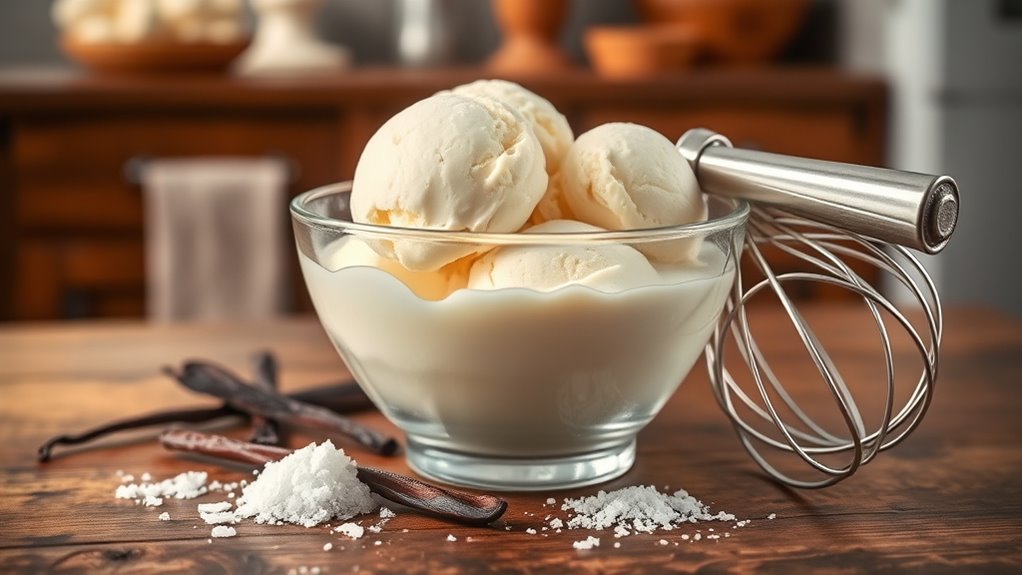To make raw cream ice cream, start by measuring 2 cups of cream, 1/3 cup sugar, and any stabilizers or flavor boosts you prefer. Gently heat the cream to about 170°F, whisking until the sugar dissolves, then remove from heat. Chill the mixture, then churn until softly set. Freeze to finish, resting briefly at 0–2°C for texture. Maintain logs of temps and adjustments for consistency. If you keep going, you’ll uncover how tweaks shape texture and flavor.
Ingredients and Quantity
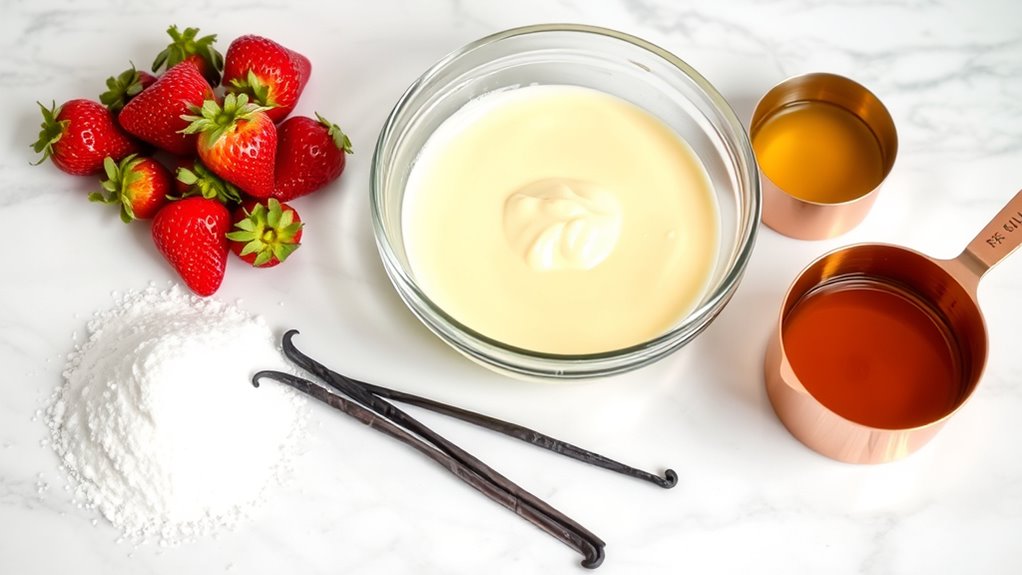
A simple, precise list keeps this section clear: you’ll need cream, sugar, and any optional flavors or stabilizers you plan to use. In this early stage, raw cream forms the base, so you quantify precisely and note flavor variations you intend to explore. You’ll measure by weight for consistency, then set aside the additives that affect texture and mouthfeel. The goal is clarity, not excess, so you define each item’s role and limit.
| Item | Quantity | Purpose |
|---|---|---|
| raw cream | 2 cups | Base richness |
| sugar | 1/3 cup | Sweetness control |
| flavor variations | as desired | Personalize profile |
| stabilizers | pinch- or gram-amount | Texture stability |
| optional add-ins | as chosen | Custom complexity |
Preparations
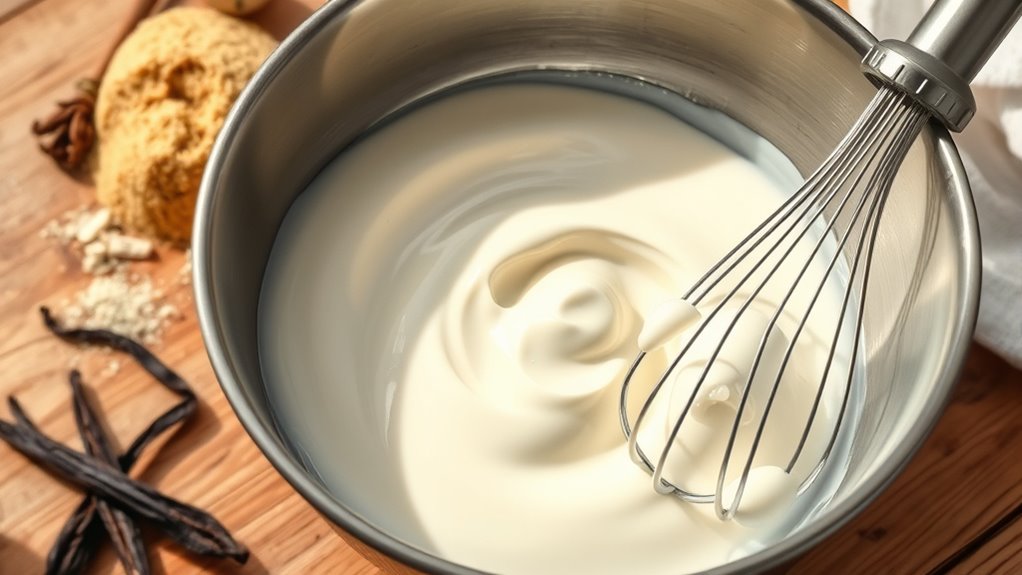
To begin preparations, you’ll organize and measure each component from the previous section, ensuring accuracy before mixing. You’ll verify weights, temperatures, and timing, then set up a clean workspace that minimizes contamination. Next, you’ll implement preparation techniques that preserve freshness: chill tools, pre-measure additives, and align ratios to target texture. Maintain a log of any adjustments, noting batch numbers and sensory cues. Ingredient sourcing should remain transparent: confirm dairy quality, pasteurization status, and any live cultures or stabilizers, documenting lot codes. Proceed with disciplined sequencing—combine, temper, and blend in a controlled sequence, avoiding abrupt changes that could destabilize emulsions. Throughout, stay mindful of safety, cleanliness, and consistency, ensuring the process remains reproducible, efficient, and aligned with your freedom to craft a pristine final product.
How to Cook
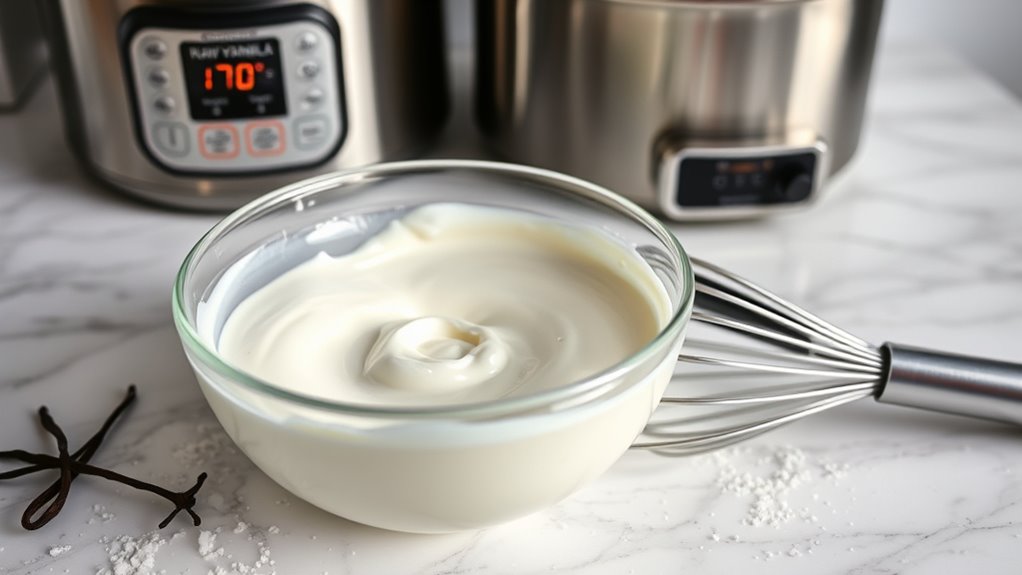
- Assemble your workspace and gather all necessary tools.
- Assess ingredient temperatures and consistency to guide cooking steps.
- Gently temper cream over low heat, monitoring with a thermometer to stay near 170°F, avoiding scorching.
- Whisk smoothly throughout the heating process.
- Introduce sugar or stabilizers gradually until fully dissolved.
- Maintain steady, small whisking movements to prevent curdling.
- Keep the mixture within a narrow temperature range to achieve a silky texture.
- Remove from heat promptly once the desired temperature and consistency are reached.
- Cool the mixture rapidly to stop further cooking.
- Strain the mixture to remove any solids.
- Document the process, noting texture, aroma, and any flavor variations tested.
- Record precise measurements and timings to ensure repeatability and control over texture, consistency, and final mouthfeel.
How to Serve
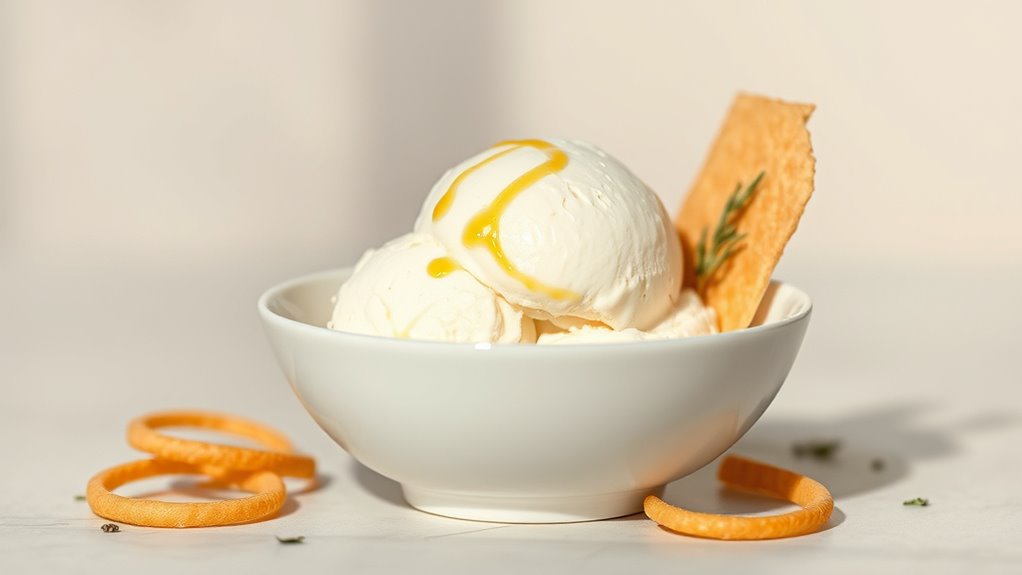
After the ice cream base has rested and chilled, portioning is straightforward: scoop or pipe into serving dishes, bowls, or cones, then plan for ideal texture and temperature at presentation. You’ll emphasize micro temperature control, allowing a brief rest at 0–2°C to firm before serving. For serving suggestions, present with a clean contrast—a light garnish or a drizzle that won’t melt the texture too quickly. Consider portioning consistency and alignment to create visual rhythm in each course. Presentation ideas center on minimalism: neutral serves, precise scoop size, and a deliberate spacing cadence on the plate or tray. Offer complementary textures—crisp tuile, herbal oil, or citrus zest—without overpowering the delicate dairy flavor. Maintain clarity, keep steps repeatable, and invite experimentation within defined guidelines.
Tips
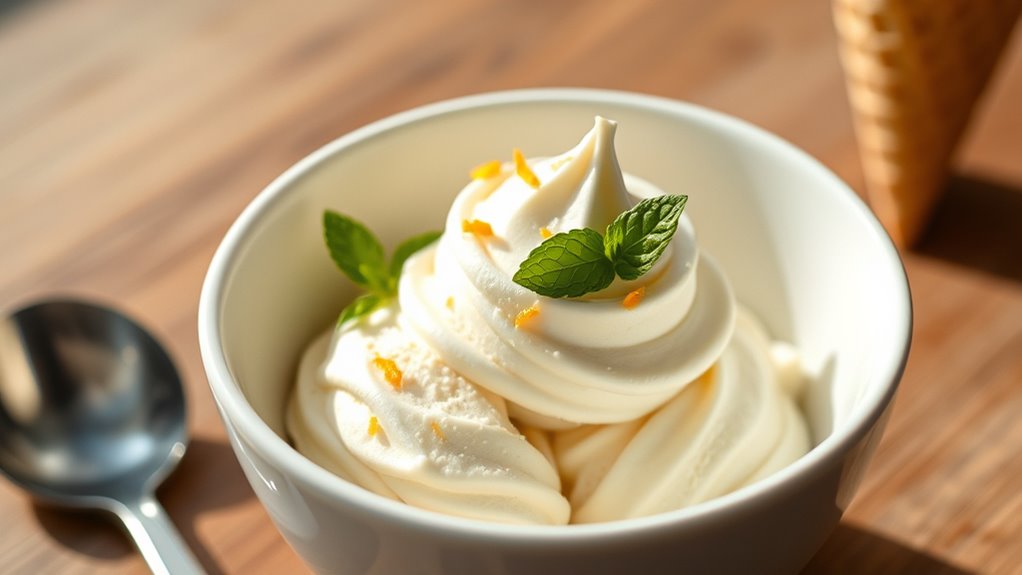
Resting and chilling aren’t enough by themselves; these tips fine‑tune texture, flavor, and service. You’ll stabilize creaminess by controlling fat distribution and fat-oxygen balance during freezing, then verify consistency with brief resting intervals between churns. Prioritize raw ingredients chosen for stability: grass-fed cream, fresh yolks, and clean, cold water. For flavor variations, introduce subtle elements after base formation—vanilla, cocoa, or citrus oils—targeting a balanced sweetness that supports dairy notes. Avoid overmixing near the end to preserve a smooth mouthfeel. Monitor temperature every 15 minutes during initial hardening; small adjustments can prevent iciness or butteriness. Record results, so future batches reproduce desired texture. Precision in timing, temperature, and ingredient quality yields reliable, high‑quality servings with clear, honest flavor.
Food Value and Benefit
Raw cream ice cream made with quality ingredients offers significant nutritional value and practical benefits. This recipe provides essential vitamins and minerals while supporting overall health when consumed in moderation.
Food Value of Raw Cream Ice Cream:
- Rich in calcium and phosphorus, vital for strong bones and teeth.
- Contains vitamins A and D, important for vision, immune function, and bone health.
- Includes fat-soluble compounds that can enhance mood and provide sustainable energy.
- Provides a good source of protein and healthy fats that aid in muscle repair and hormone regulation.
- Made from fresh, minimally processed ingredients, preserving beneficial enzymes and nutrients.
Benefits of Eating This Recipe:
- Supports bone strength and dental health due to high calcium and phosphorus content.
- Enhances immune system function with vitamins A and D.
- Promotes better digestion and nutrient absorption when prepared with fresh ingredients.
- Helps maintain balanced energy levels and mood through healthy fats.
- Suitable for individuals with lactose sensitivity when lactose content is considered.
- Encourages mindful eating with portion control and clean, additive-free ingredients.
Frequently Asked Questions
Is Raw Cream Ice Cream Safe for Kids?
Raw cream can be risky for kids due to potential pathogens; consider pasteurized options. If you choose raw, weigh raw cream benefits and kids’ nutrition, monitor for safety, and consult a pediatrician before serving to children.
Can I Substitute Dairy With Non-Dairy Milk?
Yes, you can substitute dairy with non-dairy milk, but test options carefully. You’ll explore dairy alternatives for texture and flavor; expect flavor variations and precise adjustments. Stay analytical, methodical, and free as you balance consistency and taste.
How Long Does It Churn Without an Ice Cream Maker?
Churning time varies, but without a machine expect 20–40 minutes of intermittent agitation; monitor texture. For best texture consistency, freeze in a shallow container and stir every 5–10 minutes until firm, then smooth and serve.
Will Raw Eggs Be Necessary or Optional?
You decide; raw eggs are optional. If you skip them, consider raw eggs benefits as hypothetical, and explore raw eggs alternatives like pasteurized eggs or plant-based binders to preserve texture while maintaining safety and freedom in technique.
Can I Freeze Leftovers Without Texture Changes?
Yes, you can, but expect some texture changes. Use freezing techniques like rapid chilling, proper containerization, and occasional agitation. This supports texture preservation, minimizes ice crystal formation, and keeps your frozen leftovers closer to scoopable consistency.
